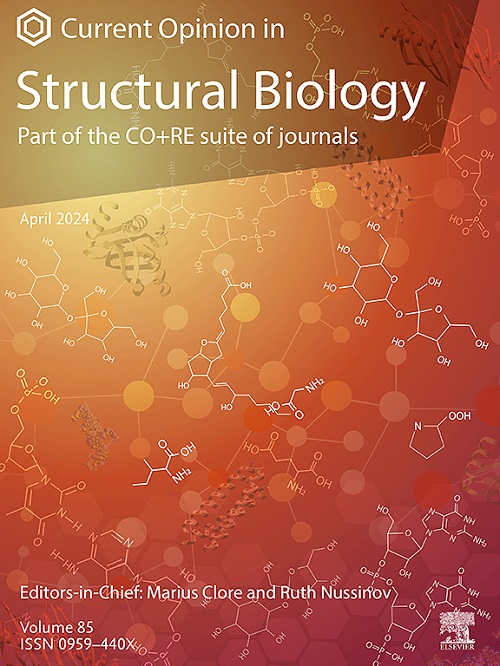通过机器学习生成蛋白质动力学
IF 6.1
2区 生物学
Q1 BIOCHEMISTRY & MOLECULAR BIOLOGY
引用次数: 0
摘要
机器学习具有先进的蛋白质结构预测,可以提供准确但大多是静态的模型。捕获蛋白质动态作为构象集成仍然是一个重大的挑战。最近的发展,特别是生成模型,使结构整体的预测超越了传统的模拟。本文综述了用于建模蛋白质动力学的新兴机器学习方法,包括生成类pdb集成、加速分子模拟、建模非球状蛋白质集成和整合实验数据。讨论了通用和系统特定的模型,特别是在构象覆盖、可转移性和对环境条件的响应方面。将实验数据与仿真数据相结合的混合模型是一个很好的发展方向。尽管如此,关键的挑战仍然存在,包括生成具有正确概率的状态,建模不可见的构象,以及严格整合实验约束。本文章由计算机程序翻译,如有差异,请以英文原文为准。
Generation of protein dynamics by machine learning
Machine learning has advanced protein structure prediction to deliver accurate but mostly static models. Capturing protein dynamics as conformational ensembles remains a significant challenge. Recent developments, especially generative models, are enabling the prediction of structural ensembles beyond traditional simulations. This review examines emerging machine learning approaches for modeling protein dynamics, in terms of generating PDB-like ensembles, accelerating molecular simulations, modeling non-globular protein ensembles, and integrating experimental data. General-purpose and system-specific models are discussed, particularly in terms of conformational coverage, transferability, and responsiveness to environmental conditions. Hybrid models, which combine experimental and simulation data, represent a promising direction. Nonetheless, key challenges remain, including generating states with correct probabilities, modeling unseen conformations, and integrating experimental constraints rigorously.
求助全文
通过发布文献求助,成功后即可免费获取论文全文。
去求助
来源期刊

Current opinion in structural biology
生物-生化与分子生物学
CiteScore
12.20
自引率
2.90%
发文量
179
审稿时长
6-12 weeks
期刊介绍:
Current Opinion in Structural Biology (COSB) aims to stimulate scientifically grounded, interdisciplinary, multi-scale debate and exchange of ideas. It contains polished, concise and timely reviews and opinions, with particular emphasis on those articles published in the past two years. In addition to describing recent trends, the authors are encouraged to give their subjective opinion of the topics discussed.
In COSB, we help the reader by providing in a systematic manner:
1. The views of experts on current advances in their field in a clear and readable form.
2. Evaluations of the most interesting papers, annotated by experts, from the great wealth of original publications.
[...]
The subject of Structural Biology is divided into twelve themed sections, each of which is reviewed once a year. Each issue contains two sections, and the amount of space devoted to each section is related to its importance.
-Folding and Binding-
Nucleic acids and their protein complexes-
Macromolecular Machines-
Theory and Simulation-
Sequences and Topology-
New constructs and expression of proteins-
Membranes-
Engineering and Design-
Carbohydrate-protein interactions and glycosylation-
Biophysical and molecular biological methods-
Multi-protein assemblies in signalling-
Catalysis and Regulation
 求助内容:
求助内容: 应助结果提醒方式:
应助结果提醒方式:


